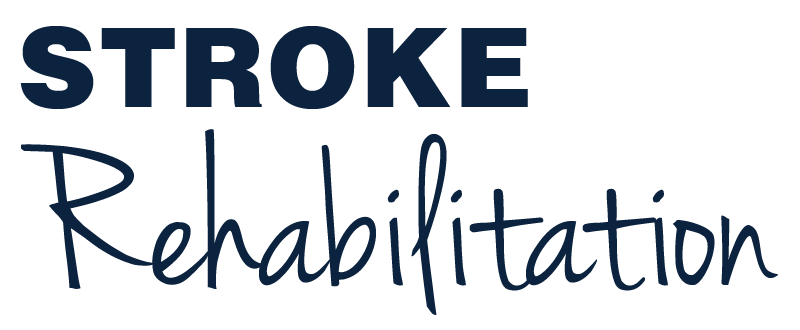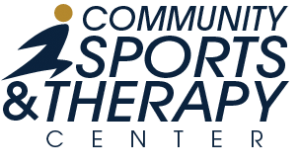
Stroke Rehabilitation
More than 7 million stroke survivors live in the United States. However, not all strokes are the same. No two stroke victims have the exact same set of symptoms.
Stroke rehabilitation or rehab helps a stroke survivor to relearn functional abilities affected by a stroke to improve their quality of life. This can include self-care, mobility, communication, cognition and more.
Our team of Physical, Occupational, and Speech therapists will work together to develop an individualized plan of care that is specific to you or your loved ones functional complaints and goals. Furthermore, your follow-up treatments are one-on-one so that the time in rehabilitation is maximized.

A stroke can change your life in an instant.
Quality rehabilitation from a strong team of therapists is key to recovery.
Every 40 seconds, someone in the United States has a stroke.
Every 4 minutes, someone dies of a stroke.
The faster stroke is treated, the more likely the patient is to recover.
Stroke is a leading cause of serious long-term disability.
Stroke reduces mobility in more than half of stroke survivors age 65 and over.
More than 7 million stroke survivors live in the United States, and less than 1/3 seek rehab.
What should you expect from stroke rehabilitation?
Your stroke recovery team should include physical, occupational and speech therapists.
It is very important to understand that treatment interventions are individualized to each patient’s needs and deficits. You may not need all three disciplines depending on how your stroke affected you. The stroke rehabilitation team will meet with you and evaluate you individually to determine what is most appropriate and beneficial for your recovery.
Motor Skills
Training to improve your mobility and ability to do daily tasks.
Strength & Coordination
An exercise program designed specifically to address your post-stroke weaknesses and defecits.
Mobility
For tasks such as transferring from a bed to chair, walking independently or with an assistive device, self-propelling a wheelchair.
Balance
Exercises and neuromuscular activities for those with a high fall risk or poor balance.
Self-Care
Training and modification to improve self-care function including feeding, grooming, bathing, toileting, and dressing skills, as well as use of adaptive equipment and/or devices.
Cognition
Including memory recall and problem solving skills.
Speech Therapy
Speech therapy is recommended if stroke caused difficulty with speaking, swallowing, or ability to communicate.
Return to Work
Customized goals to improve your physical and emotional stamina so you can go back to work and adapting how you complete a job task if needed.
Vision
Eye exercises if stroke caused difficulty with your vision. Therapy can help with spatial awareness and balance activities.
How fast you recover and how much you improve after a stroke depends on the extend of your brain injury and your rehabilitation. Stroke rehabilitation will improve your abilities and help you learn new skills or coping techniques as you recover. Rehab will begin after your stroke is over and you are medically stable.
Please call our qualified stroke rehabilitation therapists with any questions and find out
how we can help you live your life to the fullest at 419-678-OHIO
Most Common Effects of a Stroke:
Some of the effects of a stroke may depend on which side of your brain the stroke injuries. Some changes can occur no matter which side the injury is on. These include:
- Hemiparesis (weakness on one side of the body) or Hemiplegia (paralysis on one side of the body)
- Dysphagia (difficulty swallowing) or Dysarthria (trouble speaking or slurred speech)
- Cognition (problems with memory, problem-solving)
- Behavioral Changes (Personality, inappropriate language/actions)
- Vision (Decreased, peripheral vision or visual perception issues)
- Fatigue which can be due to medication or tasks being more difficult to accomplish
- Changes in mood, difficulty controlling emotions, depression, frustration, anger, sadness
Left-Brain Injury Common Effects:
- Paralysis or weakness on right side of body
- Aphasia or difficulty communicating (see below for more information)
- More reserved or cautious behavior
Right-Brain Injury Common Effects:
- Paralysis or weakness on left side of body
- One-sided neglect or lack of awareness of left side of body.
- More impulsive and less cautious behavior
- Less expression in face and tone of voice and difficulty understanding others expressions and voice tones
Stroke and Apashia
Aphasia is a language disorder that impairs your ability to communicate. It affects the production or comprehension of speech and the ability to read or write. It is most commonly caused by stroke-related injuries to areas of the brain that control speech and language, particularly in older individuals. In fact, according to the National Aphasia Association, about 25-40% of stroke survivors acquire aphasia. It can also result from head injury, brain tumor or other neurological causes. Aphasia can be very mild or so severe it is nearly impossible to communicate.
Aphasia impairs a person’s ability to process language, but does not affect intelligence. People with aphasia are usually mentally alert even though their speech may be jumbles or impossible to understand. People with aphasia are often frustrated and confused because of their ability to speak and understand others.
According to the American Stroke Association people with aphasia may have:
- Difficulty getting words out
- Trouble finding the right words
- Difficulty understanding what others are saying
- Problems with reading, writing and math
- Trouble with long or uncommon words
Can a person have Aphasia without having any physical symptoms?
Yes, but many people with aphasia after a stroke also have weakness or paralysis of their right leg and right arm. When a person acquires aphasia it is usually due to damage on the left side of the brain, which controls movements on the right side of the body.
How long does it take to recover from Aphasia?
According to the National Aphasia Association, if the symptoms of aphasia last longer than two or three months after a stroke, a complete recovery is unlikely. However, some people continue to improve over a period of years and even decades. Improvement is a slow process that involves both helping the individual and family understand the nature of aphasia and learning compensatory strategies for communicating.
Here are some Aphasia Communication Tips from the National Aphasia Association.
Stroke and Swallowing
Your stroke may cause a swallowing disorder called dysphagia. If not identified and managed, it can lead to poor nutrition, pneumonia and disability.
Aspiration is a common problem for people with dysphagia. It occurs when something you’ve swallowed enters the airway and lungs. Normally, aspiration causes a violent cough, but a stroke can reduce sensation. In this case, you may not know you’re aspirating (silent aspiration).
While in the hospital after a stroke, you are screened to determine your ability to swallow safely. If you have a problem with swallowing safely, you may not be allowed to eat until a speech-language pathologist (SLP) evaluates how well:
- Muscles in your mouth move.
- You can swallow.
- Your voice box works.
The SLP may recommend you change what you eat and drink. That’s because some foods are hard to chew and thin liquids are often hard to swallow. The speech-language pathologist will determine when it’s safe to eat more normal foods.
Adequate nutrition is essential. So if it’s not safe for you to swallow, a feeding tube may be suggested to help meet your nutritional needs.
How Do SLPs Treat Dysphagia?
The SLP develops a treatment plan to meet your specific needs, which includes exercises to improve coordination of muscle movements in the mouth and throat. To help compensate for lost function, the plan may also call for you to:
- Turn your head to one side to provide better airway protection.
- Take only small sips of liquid to minimize splashing into the airway.
What common precautions may help stroke patients swallow safer?
- Sit up straight when you eat or drink.
- Take small bites and sips.
- Take your time.
- Clear all food from your mouth.
Stroke and Self-Care
After a stroke everyday tasks can be challenging. This could be something as simple as making a sandwich or getting dressed. These challenges may be due to a number of stroke-related conditions, such as limb weakness or paralysis, one-side neglect challenges, communication challenges, balance or vision challenges and more.
What Can Occupational Therapy Do to Help Me Recover?
Our team of Occupational Therapists (OTs) and assistants (COTAs) will address your ability to complete these daily tasks. They will develop an individualized plan with specific goals that are important to you. These goals will include things needed for you to complete daily tasks such as bathing, dressing, cooking, shopping and more.
They will address ways to modify these tasks or use an assistive device, such as a reacher or a shoe horn. These goals will be customized to what is important in your life. For example, if you are an avid gardener, they will help you address ways to modify this to continue to enjoy doing what you love.
Will I Be Able to Stay in My Home?
This often depends on the severity of your stroke, but our team can assist you in recommendations to modify things at home to keep you there safely. We also offer home assessments to help you navigate through these challenges and help keep you or your loved one safely at home. During a home assessment, the occupational therapist or physical therapist will meet with you and your family. They will assess your ability to function throughout your home. The set-up of each room will be evaluated for trip hazards and optimal efficiency.
Recommendations will be made to increase a person’s function and safety. Some of these recommendations include use of equipment, grab bar placement, elimination of trip hazards, arrangement of furniture, etc.
Learn the Stroke Warning Signs

Face Drooping
Does one side of the face droop or is it numb? Ask the person to smile. Is the person’s smile uneven or lopsided?
Arm Weakness
Is one arm weak or numb? Ask the person to raise both arms. Does one arm drift downward?
Speech Difficulty
Is speech slurred? Is the person unable to speak or hard to understand? Ask the person to repeat a simple sentence.
Time to Call 911
If the person shows any of these symptoms, even if the symptoms go away, call 9-1-1 and get them to the hospital immediately.
Beyond F.A.S.T. – Other Symptoms You Should Know
- Sudden NUMBNESS or weakness of face, arm, or leg, especially on one side of the body
- Sudden CONFUSION, trouble speaking or understanding speech
- Sudden TROUBLE SEEING in one or both eyes
- Sudden TROUBLE WALKING, dizziness, loss of balance or coordination
- Sudden SEVERE HEADACHE with no known cause
Visit the American Stroke Association to learn more about the warning signs of a stroke.
